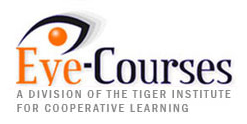Visual Fields and Pathways

Course Overview
This course is intended for beginning, intermediate, and advanced levels.
After completing this section the student should be able to do the following:
- Define Visual Field
- Define Isopter
- List 2 methods of visual field testing
- Identify relative and absolute visual field defects
- Define target size and target brightness
- Define Scotoma
- State in degrees where isopters should generally fall on a kinetic visual field
- Describe which side of the brain the impulse will end up on if an object is to the left side of the patient
- Describe which side of the brain the impulse will end up on if an object is to the right side of the patient
- Describe how the nasal and temporal fibers travel back the visual pathway
- List the 4 territories in the visual pathway
- Identify diseases that may cause territory I and territory II visual field defects
- Identify types of defects found in territory I problems
- Identify types of defects found in territory II problems
- Describe the makeup of the nerve fiber layer and how that results in certain visual field defects
- List the 3 parts of the nerve fiber layer and describe their anatomy
- Identify types of defects found in territory III problems
- Identify types of defects found in territory IV problems
- Identify what type of tumor could cause a bitemporal hemianopia
- Define bitemporal hemianopia
- Define right and left homonymous hemianopia
Here is what some ophthalmic personnel who took this course had to say:
“One of the best educational presentations I have seen yet.” S.A., COMT
“I’ve
done VF’s for years and have had questions- this has helped me to
answer those questions as well as better understand visual fields in
general. thanks” T.H., COA
“The material was great!” S.Y., COT
“Very clear to understand with good diagrams.” W.H., COT
“THANKS!!” S.L., COMT
“I
ordered my COA book about a year ago, since then I pull it out every
now and then and get really discouraged because it is so hard for a
person new to the field… I stumbled across your website a few months
ago. And I’m here to tell you that it is easier to understand your
online cources then the book. I read a chapter then i take a online
class that pertains to that subject and wham I GET IT… THANKS!”
M.Z., COA
“Excellent Study!!!! Learned more from this slide show then 3 mos of studying from Barbra Cassins Book.” A.H., COA
“I like it a lot. Thank you very much. Superb job !!!” L.M., COA
“The slid show was great and very interesting…” J.H., COT
“slide show was great” J.D., COA
This course should take approximately one hour to complete.
You
must correctly answer at least 15 of the 20 questions on the open book
post test. If you do not successfully pass the post test
the first time you may try again at no expense to you. Successful
completion of the post-test is required.
